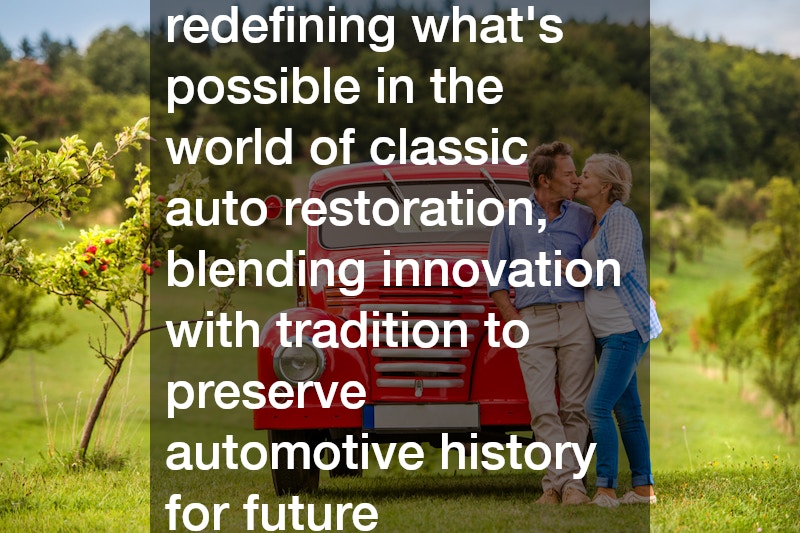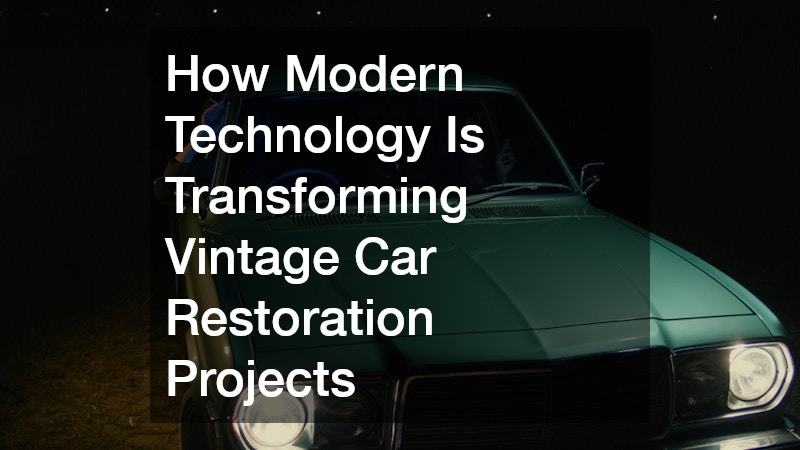Vintage cars have always captured the imagination of automobile enthusiasts with their timeless design, unique craftsmanship, and nostalgic charm. However, restoring these mechanical masterpieces to their original glory has traditionally been a labor-intensive and costly process, requiring both rare parts and specialized expertise. Today, modern technology is changing the landscape of classic auto restoration, making it more precise, efficient, and accessible than ever before. From 3D printing and digital modeling to advanced materials and diagnostic tools, technological innovation is breathing new life into an age-old craft.
Digital Tools Reshaping the Restoration Process
In the past, restoring a vintage vehicle often meant relying on photographs, blueprints, or trial and error to replicate components that were no longer manufactured. Modern digital tools have revolutionized this approach. High-resolution 3D scanning allows restorers to create exact digital replicas of car parts, ensuring precise reproduction. These scans can be used to design components down to the smallest detail before any physical work begins.
Computer-aided design (CAD) software also plays a vital role in improving accuracy during classic auto restoration. It enables restorers to visualize how each part fits into the vehicle’s overall structure and make necessary adjustments before any materials are used. This level of precision minimizes waste and ensures every modification stays true to the vehicle’s original form. With technology like CAD and 3D scanning, restorers can confidently bring even the rarest vehicles back to life without compromising authenticity.
3D Printing and the Reproduction of Rare Parts
One of the biggest challenges in classic auto restoration has always been sourcing replacement parts for discontinued models. Many vintage vehicles were built decades ago, and original components are either impossible to find or too expensive to purchase. 3D printing technology now offers a practical solution to this long-standing problem.
Using digital blueprints or scans, restorers can produce highly accurate replicas of parts that would otherwise take months or years to locate. These 3D-printed components can be made from durable materials that mimic the strength and texture of the originals, allowing restorers to maintain historical accuracy while improving reliability. Beyond availability, 3D printing also enables small-batch production, meaning restorers can fabricate only what they need—reducing costs and preserving the sustainability of the project.
Advanced Diagnostics and Engine Restoration
Restoring a vintage car’s engine requires deep mechanical knowledge and attention to detail. Fortunately, technology has made diagnosing and repairing old engines much simpler. Advanced diagnostic tools—once exclusive to modern vehicles—can now be adapted for older engines to assess internal performance and pinpoint mechanical issues without complete disassembly.
Digital sensors and thermal imaging cameras, for example, help identify problem areas like heat imbalances, oil leaks, or timing issues with remarkable accuracy. These tools not only save time but also reduce the risk of unnecessary damage during inspection. Incorporating these modern systems into classic auto restoration allows experts to better understand the condition of each component and create precise repair plans tailored to the vehicle’s needs.
Modern Materials Enhancing Longevity and Performance
Another major development in classic auto restoration is the use of advanced materials that enhance both performance and durability. While preserving authenticity is key, restorers are increasingly using high-quality composites, improved sealants, and corrosion-resistant coatings to extend the life of restored vehicles.
For example, lightweight carbon fiber can replace certain metal components without altering the car’s original appearance, improving handling and fuel efficiency. Similarly, modern paints and finishes can replicate vintage hues while offering greater resistance to fading, rust, and environmental wear. Even upholstery has benefited from innovation—new materials offer the same vintage look but are more durable and easier to maintain.
The Role of Virtual Collaboration and Online Communities
Technology has also reshaped how restorers connect and share knowledge. Online communities, forums, and virtual workshops allow experts and enthusiasts from around the world to collaborate on projects, exchange tips, and locate rare parts. Digital archives and databases make it easier than ever to access original design plans, maintenance manuals, and historical documentation that once took months to find.
This global accessibility has expanded the reach of classic auto restoration, allowing smaller shops and independent restorers to achieve professional results without needing massive budgets or exclusive resources. Virtual collaboration also helps maintain high restoration standards, as experts can consult with one another in real time, sharing photos, videos, and 3D models instantly. The result is a more connected and innovative restoration community that continues to raise the bar for quality craftsmanship.
Technology is redefining what’s possible in the world of classic auto restoration, blending innovation with tradition to preserve automotive history for future generations. From digital modeling and 3D printing to advanced diagnostics and online collaboration, these tools have made restoration more precise, efficient, and sustainable. While the art of restoring a vintage car will always require passion and skill, modern technology ensures that no project is beyond reach. As innovation continues to evolve, so too will the ability to honor the craftsmanship and beauty of classic automobiles in ways that were once unimaginable.

